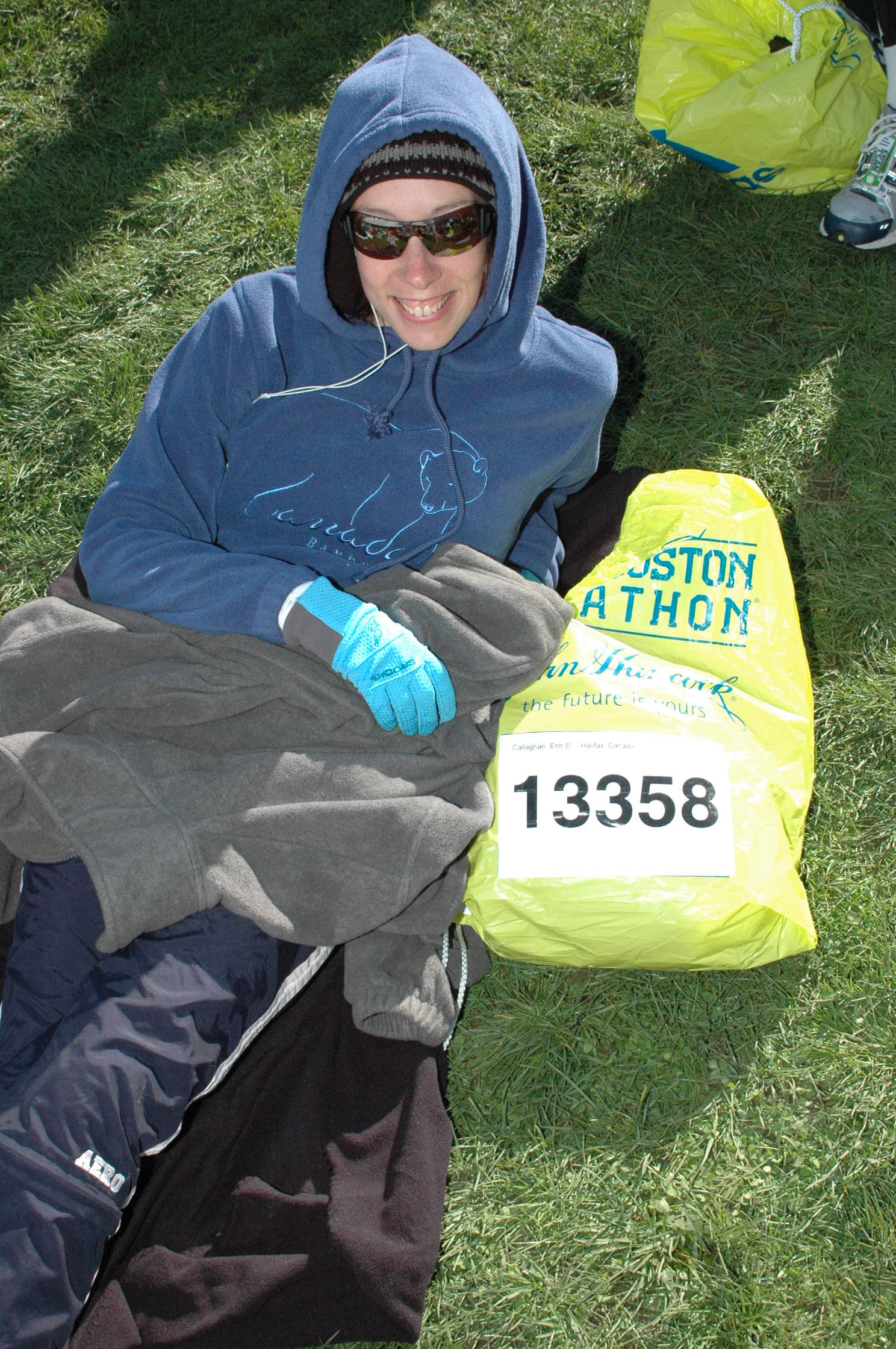Fine friends. This week I’m bringing you something a little different. Instead of my own blog musings, I present the 2 best things that I’ve read lately about being a runner. If you are wondering if this is a symptom of my Boston Marathon taper, yes, yes, it is.

A taper (a period of reduced running mileage & intensity) is the very last, very important part of a distance running training cycle. The taper pretty much involves “doing less” but it deserves the same honor and respect as your weekly long runs and speed sessions. The long run trains your body for a goal race. Taper trains your body for a goal race. Taper provides rest, a reduction in mileage and a few fast workouts to stay sharp. With a taper, you let your hard-working body recover from your hard training. End result, a stronger body. But like many runners, my body wants to work hard!
Yesterday I ran 5km. That’s all. 5km. During my Tuesday and Thursday track workouts, my warm up and cool down total more than 5km. My mileage goal this week is 60% of peak mileage. In theory, I have lots of time this week (in reality, I am coaching 2 afternoons a week and had a board meeting last night that lasted longer than my 25k Moose Run). So what’s a running girl to do with all this time? Read about running, of course.
The first piece that I want to share with you is from a blog I stumbled upon called The Logic of Long Distance by 2 running dudes from Tennessee. Their post “How it Works” is superb. To me, it is beauty. It deserves to be shared. Author Jeff kindly agreed to let me share:
“How it Works” by Jeff Edmonds
March 11, 2011This is how it works:
Training is doing your homework. It’s not exciting. More often than not it’s tedious. There is certainly no glory in it. But you stick with it, over time, and incrementally through no specific session, your body changes. Your mind becomes calloused to effort. You stop thinking of running as difficult or interesting or magical. It just becomes what you do. It becomes a habit.
Workouts too become like this. Intervals, tempos, strides, hills. You go to the track, to the bottom of a hill, and your body finds the effort. You do your homework. That’s training. Repetition–building deep habits, building a runner’s body and a runner’s mind. You do your homework, not obsessively, just regularly. Over time you grow to realize that the most important workout that you will do is the easy hour run. That’s the run that makes everything else possible. You live like a clock.
After weeks of this, you will have a month of it. After months of it, you will have a year of it.
Then, after you have done this for maybe three or four years, you will wake up one morning in a hotel room at about 4:30am and do the things you have always done. You eat some instant oatmeal. Drink some Gatorade. Put on your shorts, socks, shoes, your watch. This time, though, instead of heading out alone for a solitary hour, you will head towards a big crowd of people. A few of them will be like you: they will have a lean, hungry look around their eyes, wooden legs. You will nod in their direction. Most of the rest will be distracted, talking among their friends, smiling like they are at the mall, unaware of the great and magical event that is about to take place.
You’ll find your way to a tiny little space of solitude and wait anxiously, feeling the tang of adrenaline in your legs. You’ll stand there and take a deep breath, like it’s your last. An anthem will play. A gun will sound.
Then you will run.
Click here to visit Jeff’s “The Logic of Long Distance” blog. It’s worth it.
 The second piece that I will share with you is an excerpt from my favorite running book, “Once A Runner,” by John L. Parker, Jr. The story of Quenton Cassidy, a collegiate runner at a fictional university whose lifelong dream is to run a four-minute mile, is one of the most beloved sports novels ever written. I like to reread it during a taper. I’m forwarding you to page 123:
The second piece that I will share with you is an excerpt from my favorite running book, “Once A Runner,” by John L. Parker, Jr. The story of Quenton Cassidy, a collegiate runner at a fictional university whose lifelong dream is to run a four-minute mile, is one of the most beloved sports novels ever written. I like to reread it during a taper. I’m forwarding you to page 123:
“Certain compliments and observations made him uneasy; he explained that he was just a runner; an athlete, really, with an absurdly difficult task. He was not a health nut, was not out to mold himself a stylishly slim body. He did not live on nuts and berries; if the furnace was hot enough, anything would burn, even Big Macs. He listened carefully to his body and heeded strange requests. Like a pregnant woman, he sometimes sought artichoke hearts, pickled beets, smoked oysters. His daily toil was arduous; satisfying on the whole, but not the bounding, joyous nature romp described in the magaznies. Others runners, real runners, understood it quite well.
Quenton Cassidy knew what the mystic-runners, the joggers, the runner-poets, the Zen runners, and others of their ilk were talking about. But he also knew that their euphoric selves were generally nowhere to be seen on dark, rainy mornings. They primarily wanted to talk about it, not do it. Cassidy very early on understood that a true runner ran even when he didn’t feel it, and raced when he was supposed to, without excuses and with nothing held back.
The true competitive runner, simmering in his own existential juices, endured his melancholia the only way he knew how: gently, together with those few others who also endured it, yet very much alone. He ran because it grounded him in basics.
Running to him was real; the way he did it the realest thing he knew. It was all joy and woe, hard as diamond; it made him weary beyond comprehension. But it also made him free.”
Run on, fine friends.

